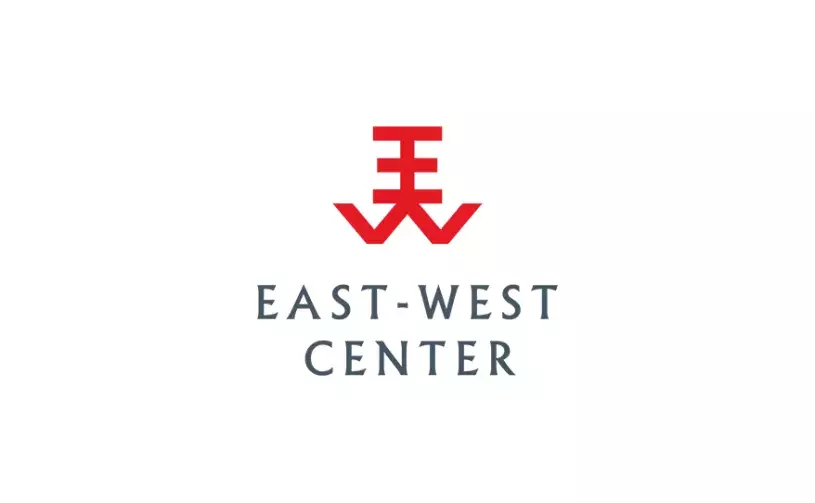Error message

By Andrew Mason and Sang-Hyop Lee
HONOLULU (Mar. 1, 2019)—In all modern societies, children and the elderly consume more resources than they produce through their labor, while working-age adults produce more than they consume. What makes this “economic lifecycle” possible is the flow of resources over time and across generations.
Population aging, which is occurring in many countries of Asia, Europe, and North America, poses challenges for policymakers because the elderly population that consumes more than it produces expands more rapidly than the working-age group that provides support. Key questions include: Will the reduction in the relative size of the working-age population slow down economic growth? As the elderly population expands, will public pension and healthcare programs be sustainable? And will rising commitments to the elderly squeeze out spending on education and other programs for children?
The economic impacts of population aging vary widely from country to country for three main reasons: populations are aging much more rapidly in some countries than in others; the elderly consume more in some countries; and the financial needs of elderly populations are supported in different ways.
The most important influence on the speed of population aging is fertility decline. When fewer babies are born, there will soon be fewer children, and somewhat later fewer working-age adults—all in comparison to larger populations of elderly people who were born at an earlier time when fertility was higher. Improvements in life expectancy also contribute to the expansion of elderly populations, but the main factor influencing the relative size of population age groups is fertility.
Populations are aging most dramatically in countries where fertility has dropped to very low levels, including China, Japan, and South Korea in East Asia and Germany, Italy, and Russia in Europe. Birth rates are higher, and aging is expected to be more moderate, in several other high-income countries, including Australia, Canada, France, the United Kingdom, and the United States.
In countries where fertility has dropped especially steeply, raising fertility from very low levels is essential to slowing down the pace of population aging. This is a very difficult goal, however. The most promising approaches emphasize support for families and for women who are trying to balance work and family responsibilities.
The second factor contributing to the economic impact of population aging is the consumption levels of the elderly, which vary widely across countries. Old-age consumption is particularly high in the United States and Japan and particularly low in China and South Korea. Spending on health care and long-term care is the major driver of these differences, often due to large disparities in prices. Efforts to slow down the growth of these costs are important policy priorities in several countries.
The third major factor affecting the economic impact of population aging is the balance between sources of support for the elderly. One source of support is earned income from work, but the importance of labor income for the elderly varies widely depending on labor policies and practices in different countries. Eliminating mandatory retirement and other forms of age discrimination, reducing gender discrimination, and promoting lifelong learning are important ways to ensure that older adults have the opportunity to earn an income and contribute to economic growth.
Both children and the elderly rely for support on the intergenerational transfers of funds from the working-age population, either through families or through public programs supported by taxes. The old also rely on financial assets they accumulated earlier in life—such as homes, farms, businesses, and savings accounts—while the young can make use of future assets by accumulating debt.
Today, the elderly actually rely very little on financial support from their families, even in Asia where family support has been a tradition. In many high-income countries, older adults rely almost entirely on public programs. For these countries, growing elderly populations will strain public funds, leading to some combination of lower benefit levels, higher taxes, or deteriorating public finances.
In countries where the elderly are not supported by public programs, they rely heavily on the savings they have accumulated over their lifetimes. As these savings are invested, aging should lead to a substantial increase in capital per worker, providing a boost to worker productivity. As a result, aging could lead to higher standards of living. The clear policy implication is to facilitate and encourage the working-age population to save for their old age.
One concern is that support for growing elderly populations will squeeze out the funding available for children. As working-age populations shrink relative to the elderly, it is particularly important that each child receives the education and healthcare required to become a fully productive worker. Policies that support education provide an important boost to economic growth.
For the most part, however, concerns that the needs of the elderly will reduce the resources available to the young have not been borne out. In countries where the elderly have high consumption relative to that of working-age adults, children tend to have high consumption as well. Japan is a striking example. Consumption by children is also particularly high in China and South Korea. In the United States, by contrast, consumption by the elderly is very high compared with consumption by other age groups. This should raise red flags for US policymakers concerned about future economic growth.
###
This East-West Wire summarizes a report by Andrew Mason and Sang-Hyop Lee, Macroeconomic impacts and policies in aging societies, prepared for Task Force 10: Aging Population and its Economic Impact + Immigration, to be presented at the May 2019 G20 Meeting in Tokyo, Japan.
Andrew Mason is a Senior Fellow at the East-West Center. He can be reached at [email protected]. Sang-Hyop Lee is a Non-Resident Senior Fellow at the East-West Center and a Professor of Economics at the University of Hawai‘i at Mānoa. He can be reached at [email protected].
Download a pdf version of this Wire article.
The East-West Wire is a news, commentary, and analysis service provided by the East-West Center in Honolulu. All or any part of the Wire content may be used by media with attribution to the East-West Center or the person quoted. To receive Wire articles via email, subscribe here. For links to all East-West Center media programs, fellowships and services, see EastWestCenter.org/Journalists.
The full list of East-West Wires produced by the Research Program is available on the East-West Center website at EastWestCenter.org/Research-Wire. For more on the East-West Center Research Program, see EastWestCenter.org/Research.
The East-West Center promotes better relations and understanding among the people and nations of the United States, Asia, and the Pacific through cooperative study, research, and dialogue.
Series editors:
Derek Ferrar
[email protected]
Sidney B. Westley
[email protected]
The views expressed are those of the authors and do not necessarily reflect the policy or position of the East-West Center or any organization with which the authors are affiliated.
By Andrew Mason and Sang-Hyop Lee
HONOLULU (Mar. 1, 2019)—In all modern societies, children and the elderly consume more resources than they produce through their labor, while working-age adults produce more than they consume. What makes this “economic lifecycle” possible is the flow of resources over time and across generations.
Population aging, which is occurring in many countries of Asia, Europe, and North America, poses challenges for policymakers because the elderly population that consumes more than it produces expands more rapidly than the working-age group that provides support. Key questions include: Will the reduction in the relative size of the working-age population slow down economic growth? As the elderly population expands, will public pension and healthcare programs be sustainable? And will rising commitments to the elderly squeeze out spending on education and other programs for children?
The economic impacts of population aging vary widely from country to country for three main reasons: populations are aging much more rapidly in some countries than in others; the elderly consume more in some countries; and the financial needs of elderly populations are supported in different ways.
The most important influence on the speed of population aging is fertility decline. When fewer babies are born, there will soon be fewer children, and somewhat later fewer working-age adults—all in comparison to larger populations of elderly people who were born at an earlier time when fertility was higher. Improvements in life expectancy also contribute to the expansion of elderly populations, but the main factor influencing the relative size of population age groups is fertility.
Populations are aging most dramatically in countries where fertility has dropped to very low levels, including China, Japan, and South Korea in East Asia and Germany, Italy, and Russia in Europe. Birth rates are higher, and aging is expected to be more moderate, in several other high-income countries, including Australia, Canada, France, the United Kingdom, and the United States.
In countries where fertility has dropped especially steeply, raising fertility from very low levels is essential to slowing down the pace of population aging. This is a very difficult goal, however. The most promising approaches emphasize support for families and for women who are trying to balance work and family responsibilities.
The second factor contributing to the economic impact of population aging is the consumption levels of the elderly, which vary widely across countries. Old-age consumption is particularly high in the United States and Japan and particularly low in China and South Korea. Spending on health care and long-term care is the major driver of these differences, often due to large disparities in prices. Efforts to slow down the growth of these costs are important policy priorities in several countries.
The third major factor affecting the economic impact of population aging is the balance between sources of support for the elderly. One source of support is earned income from work, but the importance of labor income for the elderly varies widely depending on labor policies and practices in different countries. Eliminating mandatory retirement and other forms of age discrimination, reducing gender discrimination, and promoting lifelong learning are important ways to ensure that older adults have the opportunity to earn an income and contribute to economic growth.
Both children and the elderly rely for support on the intergenerational transfers of funds from the working-age population, either through families or through public programs supported by taxes. The old also rely on financial assets they accumulated earlier in life—such as homes, farms, businesses, and savings accounts—while the young can make use of future assets by accumulating debt.
Today, the elderly actually rely very little on financial support from their families, even in Asia where family support has been a tradition. In many high-income countries, older adults rely almost entirely on public programs. For these countries, growing elderly populations will strain public funds, leading to some combination of lower benefit levels, higher taxes, or deteriorating public finances.
In countries where the elderly are not supported by public programs, they rely heavily on the savings they have accumulated over their lifetimes. As these savings are invested, aging should lead to a substantial increase in capital per worker, providing a boost to worker productivity. As a result, aging could lead to higher standards of living. The clear policy implication is to facilitate and encourage the working-age population to save for their old age.
One concern is that support for growing elderly populations will squeeze out the funding available for children. As working-age populations shrink relative to the elderly, it is particularly important that each child receives the education and healthcare required to become a fully productive worker. Policies that support education provide an important boost to economic growth.
For the most part, however, concerns that the needs of the elderly will reduce the resources available to the young have not been borne out. In countries where the elderly have high consumption relative to that of working-age adults, children tend to have high consumption as well. Japan is a striking example. Consumption by children is also particularly high in China and South Korea. In the United States, by contrast, consumption by the elderly is very high compared with consumption by other age groups. This should raise red flags for US policymakers concerned about future economic growth.
###
This East-West Wire summarizes a report by Andrew Mason and Sang-Hyop Lee, Macroeconomic impacts and policies in aging societies, prepared for Task Force 10: Aging Population and its Economic Impact + Immigration, to be presented at the May 2019 G20 Meeting in Tokyo, Japan.
Andrew Mason is a Senior Fellow at the East-West Center. He can be reached at [email protected]. Sang-Hyop Lee is a Non-Resident Senior Fellow at the East-West Center and a Professor of Economics at the University of Hawai‘i at Mānoa. He can be reached at [email protected].
Download a pdf version of this Wire article.
The East-West Wire is a news, commentary, and analysis service provided by the East-West Center in Honolulu. All or any part of the Wire content may be used by media with attribution to the East-West Center or the person quoted. To receive Wire articles via email, subscribe here. For links to all East-West Center media programs, fellowships and services, see EastWestCenter.org/Journalists.
The full list of East-West Wires produced by the Research Program is available on the East-West Center website at EastWestCenter.org/Research-Wire. For more on the East-West Center Research Program, see EastWestCenter.org/Research.
The East-West Center promotes better relations and understanding among the people and nations of the United States, Asia, and the Pacific through cooperative study, research, and dialogue.
Series editors:
Derek Ferrar
[email protected]
Sidney B. Westley
[email protected]
The views expressed are those of the authors and do not necessarily reflect the policy or position of the East-West Center or any organization with which the authors are affiliated.
East-West Wire
News, Commentary, and Analysis
The East-West Wire is a news, commentary, and analysis service provided by the East-West Center in Honolulu. Any part or all of the Wire content may be used by media with attribution to the East-West Center or the person quoted. To receive East-West Center Wire media releases via email, subscribe here.
For links to all East-West Center media programs, fellowships and services, see www.eastwestcenter.org/journalists.







